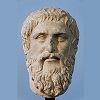7.7: Empires- Recovery and Collapse
- Page ID
- 132379
7.6.1: Frederick Barbarossa and the Holy Roman Empire
In the early part of the twelfth century, power in the Holy Roman Empire decentralized, while the cities of northern Italy were increasingly governing themselves. The Holy Roman Emperor Frederick Barbarossa (r. 1152 – 1190) sought to arrest this decline and make his subjects adhere to his authority.
Many of the cities of northern Italy had gradually moved from rule by an urban nobility or bishops to self-government by an elected commune, and these communes were often reluctant to acknowledge imperial authority, especially with respect to the taxes that Barbarossa believed were owed him. Shortly after beginning his reign, Barbarossa sought to implement this authority.
Barbarossa had a great deal of initial success, but eventually, the city-states of Northern Italy united into an organization called the Lombard League. This League allied with the popes, who lent their moral authority to the cause of the northern Italian city-states. Why? If the emperors were too powerful in Northern and Central Italy, then they would threaten the papacy’s independence. Eventually, this coalition inflicted a military defeat on Barbarossa at the Battle of Legnano (1176), after which Barbarossa was forced to concede a great deal of self-rule within the Empire to the Italian city-states.
Near the end of his reign, Barbarossa would lead an immense army on a crusade. In 1187, the kings of Western Europe were forced to respond to a great catastrophe for Christendom: the city, and, indeed, most of the Kingdom of Jerusalem had fallen to a Muslim army under the sultan Saladin. These kings responded with the effort known as the Third Crusade. (See Chapter 7.8.)
7.6.2: The Komnenoi in Byzantium
The other rightful heir of the Roman Empire was the Byzantine Empire. After the disaster of Manzikert, the Komnenos emperors had managed to rebuild a Byzantine army based on the system of pronoiai and mercenary forces. Emperor John II (r. 1118 – 1143) followed up on Alexios’s work and established effective Byzantine control over much of Western Anatolia, consolidated imperial hold on Southeastern Europe, and, indeed, forced the Crusader States to acknowledge him as their overlord.
.png?revision=1)
Manuel Komnenos (r. 1143 – 1180) sought to extend Byzantine power by suppressing the growth of Venice in the Eastern Mediterranean, forming an alliance with the growing kingdom of Hungary, and temporarily forcing the Turks of central Anatolia to acknowledge his overlordship. In the end, the emperor’s reach exceeded his grasp.
His attempt to conquer Fatimid Egypt failed when the military commander of Damascus, Saladin, outmaneuvered both Byzantium and Jerusalem. As a result, Egypt was added to the territory of Damascus, which created a larger Muslim Empire in the Middle East. Likewise, Manuel's army was defeated by the Saljuq Sultanate of Rum at Myriokephalon in 1176. Ultimately, the Byzantine Empire lost the wealthy agricultural land of Central Anatolia to the Turks, and the tax revenue that went with it.
.png?revision=1)
In the end, the Komnenoi had managed to restore the Byzantine Empire as a regional power, but it was left with structural weaknesses that would eventually prove to be its undoing.


